The Parker 45 wasn’t the first fountain pen I owned. I suppose I could think of it as pen 0.1 rather than 1.0 but I’ll leave the naming conventions to software developers. ;)
Fair warning that there’s a good amount of preamble here. I need to lay out some history and this is how I tend to write. I don’t wish to bore you as a reader and I hope to keep evolving as a writer going through this creative process. I’m not great at self-editing for conciseness in the moment. Ask my college professors if you want. They’ll confirm it.
In any case, the 45 is pen #1 because it is the first fountain pen that I can distinctly remember seeing and using when I was young. It is the pen that ultimately led me to being a guy with enough pens that he felt he should start a blog about them. The Parker 45 brought me here to this intersection of time, interest, and opportunity.

The 45 belonged to my mom, who bought it while she was in college. Probably 1963 or 1964. She didn’t use it all the time when I was growing up, but often enough that I have specific memories of it in her purse or a drawer where she kept it. I’m not sure of the first time I got a chance to use it but I do recall that it made my writing look quite different than it normally did. Why was that? Two magic words: stub nib.
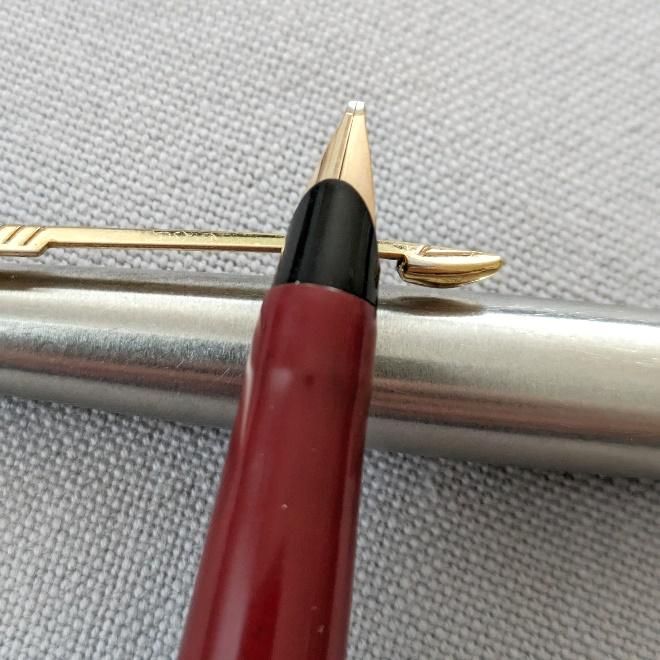
My mom’s writing has always been compact with rounded shapes and lines. It works with just about any pen, always consistent. But she liked how a stub nib made the letters look, how it added dimension and character to them without having to really change anything about one’s writing mechanics. The 45 she bought did not originally come with a stub nib. She specifically sought out a stub replacement unit to put in the 45. Incredibly, the nib’s box is still extant and intact.
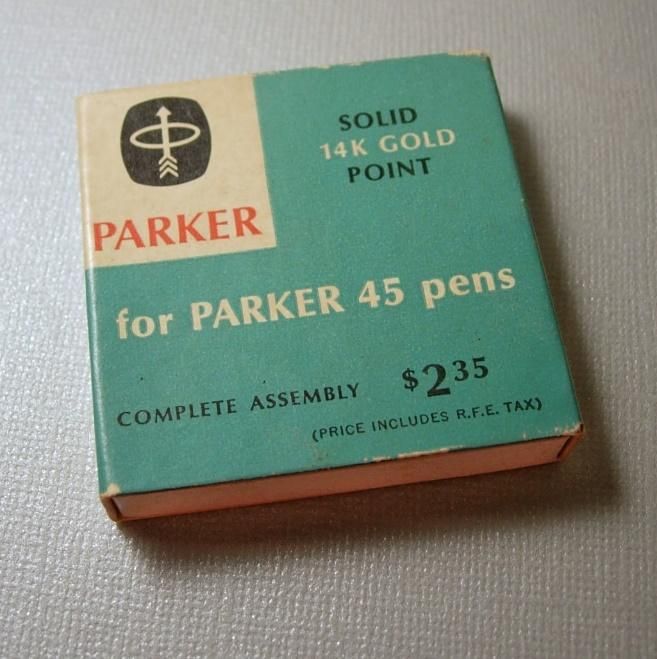

When I was young my handwriting was not looked on favorably by the teachers at school. Cursive was a struggle and when there was a place on my report card for a handwriting grade, I got a C at best. They weren’t wrong judging by the industry standard, so to speak. But there was only that standard offered and as a kid it can be tough when one of ways in which you must express yourself daily is classified as “needs improvement.”
As a result, I all but abandoned cursive writing. On rare occasions these days an especially expressive nib (hey there, Scribo) may compel me to use cursive for some sample writing. 99% of the time, though, I print everything. My print can be relatively neat in most instances but kind of boring with the line a standard round point provides. A stub nib changes all of that because it gives you line variation.

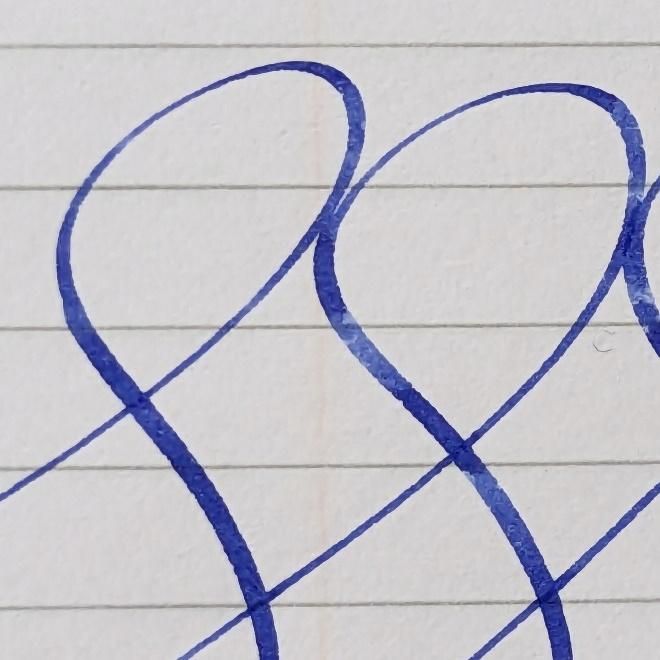
Yup, the 45 stub started me down the fountain pen road and inspired the name of this blog.
In basic terms, line variation is a nib giving one size or shape of line when writing one kind of stoke and then a different line when writing a different kind of stroke. Some people prefer a line to be consistent for all the strokes they make when writing. Stub and italic nibs are shaped to create thinner lines for cross strokes and thicker lines for down strokes. With continuous curving strokes, like forming an O or an 8, you can see the seamless transition from one plane to the other. I liken it to a little mobius loop on the page. I have nothing against a good monoline nib, but I love the variation. It is what makes fountain pens special because such variation is so easily attainable and customizable. The variation makes handwriting, already a personal thing, feel that much more personal to me.

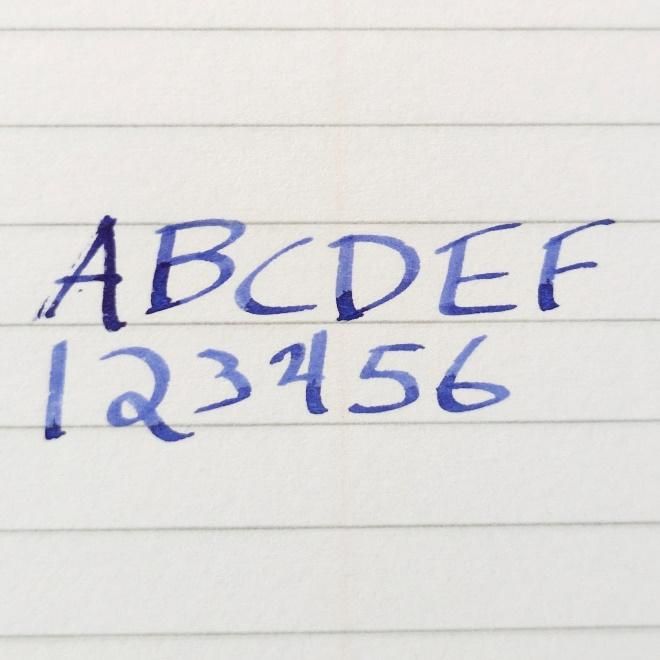
These lines are what caused me to look at my handwriting and say “I like that. It looks good.” After years of not liking how I wrote, years of taking to heart the criticism from teachers that it was sloppy and poor, I loved how it could look when using this pen.
You may think this would lead directly to buying a fountain pen of my own with a stub nib. You would be wrong. A long time passed from using mom’s 45 as a teenager to having my own fountain pens with the transformative stub nib.
What did I use in the interim? Lots of things, including some Pilot Varsity fountain pens for note taking in college, but mostly it was rollerballs.
Why rollerballs? Well, I liked the smooth and easy ink flow. I was never fond of the pressure needed to write with a ballpoint. More pressure meant a tighter grip, which eventually hurt my hand, which didn’t do anything to help the whole “Nathan needs to improve his handwriting” vibe from grade school.
As luck would have it, one of the other pens that I remember mom using often was a Pilot Precise. From the jump I thought this was one of the coolest pens out there. It had the sleek bent steel clip, the window on the barrel to see the ink level, and the transparent grip section with the collector fins. Lastly, it had the tiny needlepoint tip that laid down the same solid wet line no matter what. As a kid I had no idea how the Precise did what it did but I knew I was a fan of the smooth bold mark it made on paper.

I used Precise rollerballs a lot in college and beyond. I used other rollerballs from Uni and Zebra as well. Japanese capped rollerballs and I had a thing going on. At this point it would be the natural move to go to fountain pens and live in that wonderful intersecting zone of smooth writing with line variation.
Nope. Wrong again.
Once out of college with a job to put some money in my pocket I got into the hobby of collecting pocketknives. Pocketknives, in turn, led to going further down the road of everyday carry (EDC). At some point, I was an active member on at least five knife or EDC-related forums. I spent a lot of time posting, reading, buying, selling, and chasing different gear in search of the best EDC setup for my needs.
An essential part of the EDC kit is a writing instrument. There was nothing wrong with the rollerballs I got from Staples or Office Max back then but they weren’t the “cool gear” I had become wrapped up in. Lots of folks posting their EDC kits online had a Fisher Space Pen or something using a Fisher cartridge. The primary benefit of the space pen is that it writes on just about anything in any kind of condition. For reasons I’m still not entirely sure of, I decided that this quality of a pen writing anywhere was the factor that trumped all others. Maybe it was the idea of being prepared for the day with my gear meant I needed a pen that would work no matter what. You know, in case I ran into Rachel McAdams one day and had to take down her phone number on a piece of oily, dirty truck tarp in a torrential downpour.

Loved you in Wedding Crashers!
I bought a black Fisher bullet pen. I used it every day for three years, give or take. The blobs that formed on the tip and smeared the page were an annoyance but I was happy with the overall package and performance.
Wait a minute. What about not liking the pressure needed to write with ballpoints? All I can say now is that the Fisher felt different enough from something like a regular Bic so as not to mind the fact that it didn’t write as easily as a rollerball.
As I got deeper down the pocketknife rabbit hole and didn’t blink at spending $500 on a custom knife, the $20 Fisher bullet pen took on the air of something that didn’t match the level of everything else around it in my pockets and my EDC bag (Maxpedition - you were there, you know you had one). These are the things we think about when we’re younger without the experience of life and all its setbacks.
Rick Hinderer was a knifemaker from Ohio who expanded into making modular kubotan sets out of titanium and aluminum that could be configured as pens. The pen components used a Fisher refill. Aha! A tough, cool looking pen that used the same refill I had come to like. Consider me sold. The Hinderer pen was an incredibly well-made piece. Did I ever use it to punch out a car window or incapacitate a nefarious assailant? No. I used it mostly to write at my desk job for a few years, and it performed that function admirably. In retrospect, I think about how heavy the pen was and that it practically had its own momentum to take into account when writing. I can’t imagine using a pen that heavy every day now, but back then it wasn’t a concern because the pen was cool.

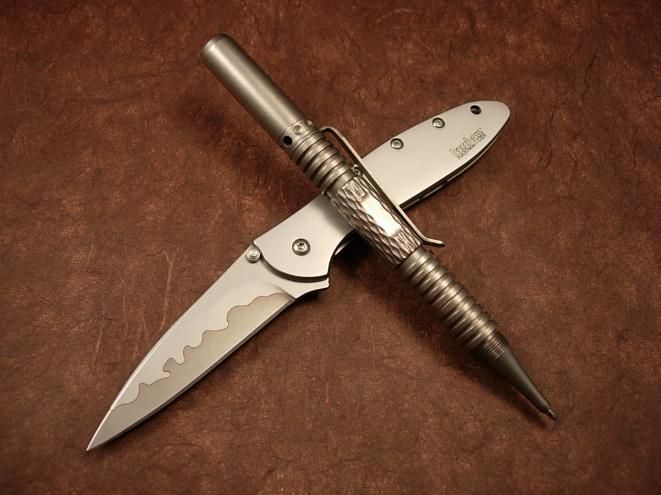
When I left the job that helped finance the knife and gear hobby, money eventually ran short and most of the toys were sold off to pay bills. The Hinderer pen was no exception. I went back to the Fisher bullet pen for a while but eventually tired of the ink smears and the outer barrel starting to come loose from the inner components. I needed something else. I still wanted a pen that was robust and dependable. I found Tactile Turn and bought one of their Glider models in stainless steel. Great craftsmanship, smooth bolt action, tough as nails. I used that daily for maybe a year but grew to dislike the weight and balance of the overall package for writing. I was ready to move on to something else.
It was at this point, somewhere in late 2015, that I decided to come back to fountain pens. But not the 45. That was still my mom’s pen. I poked around online, did some research, and ended up choosing a modern fountain pen that had been an entry point for a lot of people. We’ll cover that pen another time. Let’s move to the Parker 45 as it exists with me now and why I love it.
I could nominate the Parker 45 as an ideal pen because it has practically everything I want and nothing I don’t. It has slim, sleek, and classic looks that always appealed to me. It has a reliable slip cap that posts securely. It has a long, tapering section that can allow several different grip positions. The nib unit is easily removed and disassembled for cleaning. The nibs can quickly be swapped out to match your writing preference. It takes the same standard cartridge now that it took 63 years ago. These qualities of the 45 helped define many points I continue to value in fountain pens.
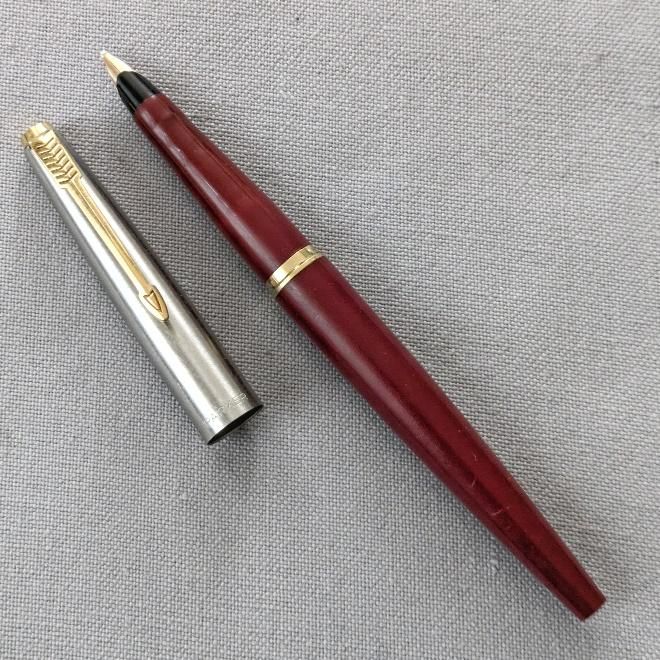
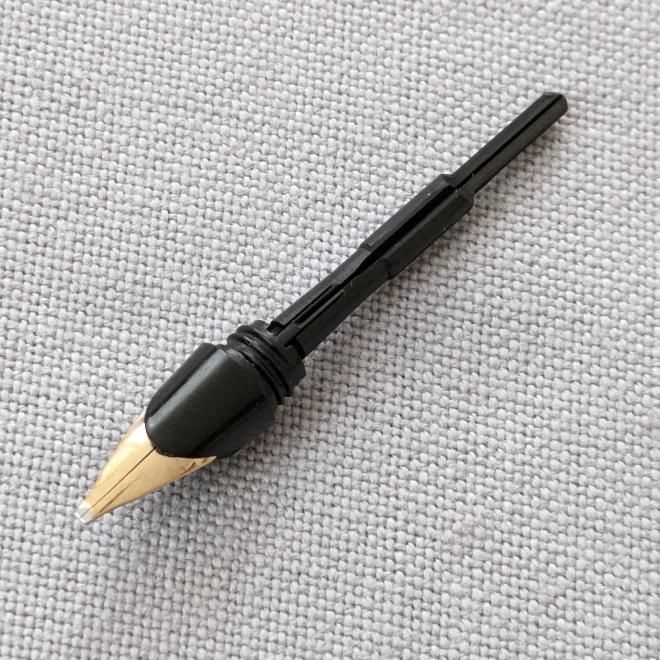

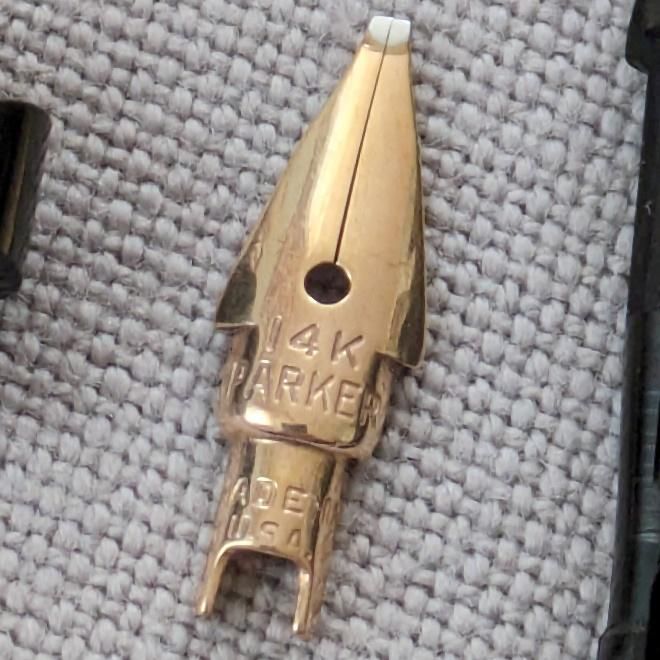
The 45’s size and balance always worked for me. My hands are average sized and I can use many different pens comfortably with a standard three finger grip, but nothing fits like a 45. It is the most natural feeling pen I’ve used. I don’t think about holding it. I just write with it as the perfect conduit to let my thoughts pour directly on to the page.
The nib is small and unassuming but it is everything. It had 50+ years of use before coming to me. It still creates that feeling from adolescence when I realized a letter could be more than just a rigid form. It could be an expression of something more significant, something like pride in how I wrote.
The 45 is also an excellent way for one to step into the world of vintage pens. I have five examples of the 45 and several other vintage Parkers as a result of how good the first one is.
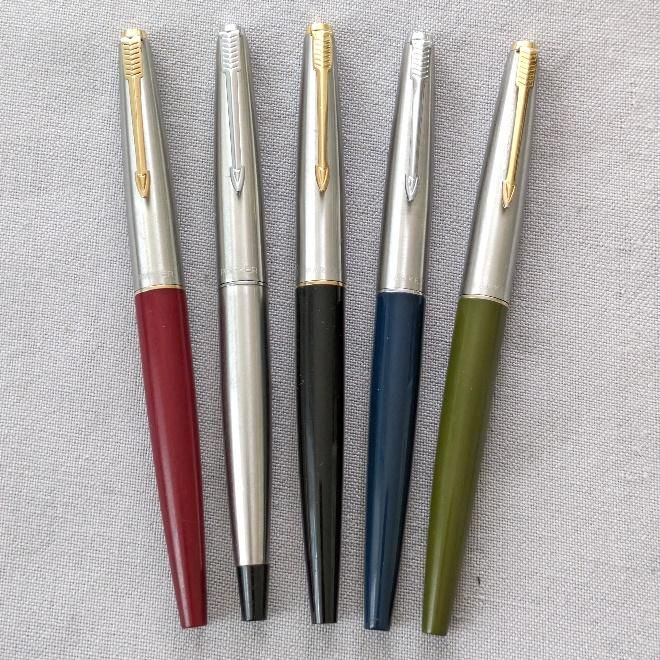
As a model produced for 47 years there are a lot of 45 pens and parts out in the world to be had. There’s a great deal of knowledge and information to reference. The range of colors and trims available on the 45 figure to offer something to suit the taste of most anyone interested in it. The 45 is made to last if cared for. The grip can start to get wavy over time from interaction with clutch rings in the cap but I don’t consider this an issue unless it compromises the integrity of the section.
You may still wonder exactly how the 45 came to me from my mom. When I was maybe 5 or 6 pens into the new hobby, I was letting her try out some of them. I asked if she still had the 45 and talked about how I remembered it from years ago. She retrieved it from somewhere and handed it to me, saying I could have it. I was appreciative but I don’t think I fully realized what it meant to have that pen and what it would continue to do to inform and influence my path with fountain pens. Mom still uses and enjoys fountain pens. She still likes stub nibs. She may ask my opinion about a pen if she sees one that interests her, and if her pens need cleaning or troubleshooting, she knows I’ll take care of it.
There you have it, the story of pen #1. Thanks for reading. (I can’t imagine they’ll all be this long.)
If you have any feedback, you can send it to linevariation@gmail.com
Written to the music of: The Arcs, Atari Teenage Riot, Avenged Sevenfold, Bikini Kill, The Bots, The Crystal Method, Fluke, Fugazi, Gorillaz, Helmet, INXS, The Jesus & Mary Chain, Jungle, Junkie XL, Letters to Cleo, Lyrics Born, Mellow Bravo, and Mike Ness.